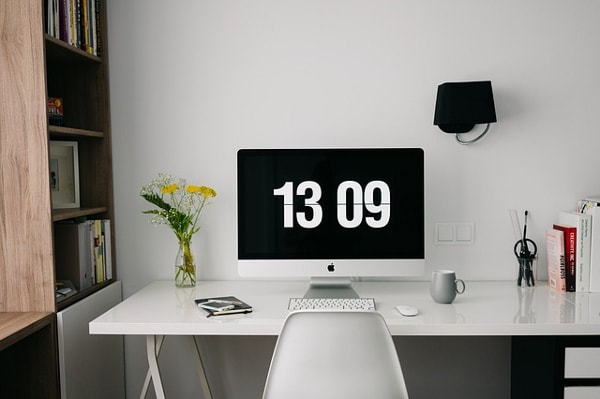Obviously, you will have certain time constraints where it comes to starting your working day and ending it. However, when it comes to filling your day, most of us have at least some flexibility to shape things into an order that works for us.
First things first For one thing, if you are using email or text or messaging systems for communication, the first order of the day should always be to not just check your incoming messages, but deal with them straight away. ‘Dealing with them’ does not always equal ‘getting them done’, although that would be the best possible solution. In some cases, however, what you need to do is plan those things into your day, or plan them into another day when it is necessary or convenient to finish that particular task. Make sure to leave only things in your inbox that you have to act on, and that hasn’t been converted into a reminder already. All the rest should go into a message filing system right there and then. For the rest of the day, check email regularly (Every hour? Four times a day?) but do not let yourself be interrupted by messages while doing other tasks. Plan your day properly The first thing to slot into your day are fixed appointments. Those have priority over anything else as they involve other participants and should be respected, always. When you plan those in, don’t forget the time to get to the place where you are supposed to meet those people. Be generous in your assessment of the time needed to get there: better be 5 minutes early, than too late! Now look at what you need to achieve on that day and create time slots for these tasks (in between the appointments). Make them long enough to get things done and short enough to allow for moving around, having a break or get something to replenish your fluids on a regular basis. Regular breaks are good for your body and your brain – moving around keeps you awake and taking your mind off the task for a moment will provide additional stimulus and pull you out of any ruts you might have ended up in. Then dive into the next time slot. When planning the day, leave space for the unexpected: don’t fill every bit up completely. There will be phone calls, there will be urgent things to do, you might run out of steam, you could be late from your lunch break,… account for those and you will not be overwhelmed as easily. If you find yourself in the enviable situation of having finished all the tasks you have set for yourself on that day, you can simply pick up something unscheduled and keep going: that will give you a head start on the next day! Group similar things together If you find that you have to do a lot of small tasks, and you believe that time slots of substantial time are too long for these tasks, maybe you can group things together that use similar tools, the same software, require the same displacements, or have some kind of common thread to them? It is useful to consider these as multiple items in longer time slots as nothing is worse than planning 5 minute slots for a whole day, and finding that you are running late from 30 minutes into the schedule. Rather than “5 min clearing, 5 min hole punching, 10 min sorting, 5 min shredding, etc”, why not plan “50 min filing” and then stop. If there is any filing left, plan another time slot the next day or continue in an empty slot later in the day. You won’t spend as much time setting up your schedule in the morning, and you’ll feel less stressed about the time frame, too. Finish things off One issue I often see is that people don’t plan for a proper close down of their work time and work area. Plan in some time at the end of the day to clear your space and make sure your area looks inviting for you to arrive the next day without being overwhelmed from the word ‘go’! It’s amazing how much a cluttered worktop can depress you when you come into your work area. It always feels as if you never get anything done. But you do! It just LOOKS untidy. If your workspace looks tidy in the morning, you can simply start working without having to look for things, read your emails, plan the day and get going. Try it: it really works. It takes no time at all to arrange things neatly. Also, it helps with confidentiality and avoids oversights. If you are self-employed and work from home, most of these tips apply in a similar fashion. There are additional issues to consider, though: if you have a home office, you might be tempted to just leave anything as is “because nobody will ever see it anyway”. That sounds true, but someone will see it every day: YOU! And it makes sense to keep your space clear as it will make your more efficient and less likely to just brush over stuff. If you have a home office in a specific room, remind yourself of the fact that this is the only room you are working in. The other rooms at home are a not-work zone. This will help your mind make the separation and relax when not at work. If you work from your kitchen or living room table, clearing up becomes a life-enhancing thing: just imagine having to look at all your work even when your official work day is over! It makes perfect sense to separate ‘work time’ from ‘not-work time’ and leaving those papers out there will not allow you to relax, ever. I’m one of those people myself and have learned the hard way that it is absolutely necessary to separate those two times of day: being self-employed involves strange working hours sometimes, but it does not mean you have to be reminded of work all the time, even when you are not currently working! Therefore, I clear my work from my dinner table at the end of the last time slot and put it away. That leaves my space in ‘free time mode’ and my mind can allow itself to let go of work for a while. Comments are closed.
|
Ask the ClutterMeisterIdeas to help clear away the mess in your homes and in your minds.
Feel free to share any of my posts, but please put in a backlink to the original blog post. Thank you. The author
Hi, my name is Tilo Flache. My mission: help clients declutter mind and space.
This blog contains pointers for your journey towards a happier living experience. Archives
November 2023
|



 RSS Feed
RSS Feed




